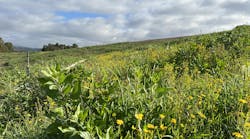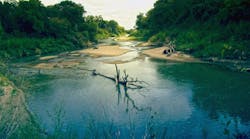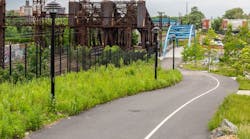All of us have seen at some point the destruction caused by widespread deforestation: accelerated erosion, landslides, and, too often, financial hardship for the people living right on the slippery edge of their countries’ economies. In Haiti, for example, about 98% of the forests have been lost, first to farming and the timber industry, and then to the many thousands of individuals who clear land to plant subsistence crops, cut trees to burn for fuel, or try to eke out a living by making charcoal. The result has been an increase in the number and severity of landslides; in 2004, one village lost more than 2,000 people in a single storm.
There is an increasing trend in the right direction, however. Reforestation and afforestation—the planting and nurturing of forests where none previously existed—are occurring in many parts of the world. In Kenya, the late Nobel Prize winner Wangari Maathai set up the Green Belt Movement in 1977 to encourage local tree-planting; by the time of her death in September 2011 the organization was responsible for the planting of 45 million trees in Kenya and, having expanded internationally, millions more worldwide.
Israel is another good example. More than two-thirds of the country’s forests have been planted, as opposed to growing naturally-part of an effort to prevent erosion and desertification and to better manage water resources. The Israeli forest service oversees the work, much of which is done by volunteers. Many people think of the country’s relatively small geographical area as arid, but in fact it has three distinct climate zones, Mediterranean, semi-arid, and arid. Afforestation is ongoing in two of them: the Mediterranean zone, where pest-resistant brutia pine and oak maquis are densely planted, and the semi-arid zone, where the plantings are sparser and depend on water harvesting techniques that have been used in the region for thousands of years. Many trees in the semi-arid zone are planted along dry riverbeds; the trees make use of the seasonal water that collects there, and the trees protect the riverbeds from erosion.
As with most sophisticated afforestation efforts, Israel is attempting to recreate a natural balance. Rather than planting many similar trees at one time in a single area-which has been common to many fledgling afforestation attempts around the world-it strives to create stands with multiple species of trees of different ages. It takes greater long-term planning to achieve this mix, but the payoff is a hardier forest with greater biological diversity, greater resistance to disease and parasites, and potentially greater economic benefit as well.
Even in Haiti, with only 2% of its natural forest remaining, progress is being made. Environmental groups are teaching farmers sustainable-and affordable-soil conservation practices, making it less likely that they’ll need to clear additional land, and are also encouraging tree-planting. It’s a long process, but there are few more valuable investments the country can make.






